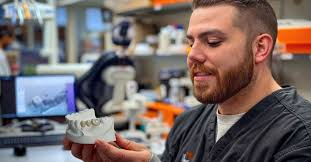1. Understanding the Importance of Dental Supplies in Modern Dentistry
Dental supplies form the foundation of every dental practice, playing a crucial role in patient care, hygiene, and treatment effectiveness. These supplies encompass everything from basic consumables like gloves, masks, and syringes to specialized equipment such as X-ray machines, dental chairs, and ultrasonic scalers. The importance of quality dental supplies cannot be overstated, as they directly impact diagnostic accuracy, procedural efficiency, and overall patient satisfaction. Dental professionals rely heavily on dependable, sterile, and advanced tools to provide consistent and safe orasl healthcare. Without access to the right supplies, even the most skilled dentist would face serious limitations in offering optimal treatment. Additionally, modern dental practices must comply with strict regulatory standards, making the availability of certified and high-quality supplies a necessity rather than a choice. As technology evolves, the dental supply market continues to expand, offering new tools that improve care outcomes and streamline daily operations.
2. Categories of Dental Supplies: Consumables, Equipment, and Instruments
Dental supplies Super stone can be broadly categorized into three major groups: consumables, equipment, and dental instruments. Consumables include disposable items like gloves, face masks, bibs, gauze, suction tips, and disinfectants, which are essential for maintaining hygiene and infection control. These items are used in every procedure and must be replaced frequently. Dental equipment refers to the larger, often more expensive items such as dental chairs, lighting systems, autoclaves, X-ray units, and intraoral scanners. These tools form the infrastructure of a dental clinic and are vital for diagnosis, treatment, and patient comfort. Lastly, dental instruments include hand tools like explorers, mirrors, forceps, scalers, and drills. These instruments must be made from high-quality, durable materials like stainless steel to withstand sterilization and repeated use. Together, these categories ensure that dental professionals are well-equipped to handle all types of dental procedures, from routine check-ups to complex oral surgeries. Understanding these categories helps clinics maintain stock efficiently and invest wisely in equipment that aligns with their service offerings.
3. Innovations in Dental Supplies: Technology Shaping the Future
The dental supply industry has witnessed rapid advancements thanks to technology, significantly improving the quality and efficiency of dental treatments. One of the most transformative innovations is digital dentistry, which includes tools like CAD/CAM systems for same-day crowns, 3D printers for dental models and prosthetics, and intraoral scanners that replace traditional impressions. These innovations not only enhance accuracy but also improve patient experience by reducing discomfort and treatment time. Additionally, the rise of laser dentistry has introduced tools for soft-tissue procedures, teeth whitening, and cavity detection with less pain and quicker recovery. In the realm of infection control, modern sterilization units now offer faster, more effective cleaning of dental instruments. Moreover, teledentistry platforms supported by digital imaging and cloud-based software are enabling remote consultations and record-keeping, expanding access to dental care. By integrating these high-tech solutions into their practice, dental professionals can deliver superior results while staying ahead in a competitive industry. The future of dental care is undeniably intertwined with continuous innovation in dental supplies.
4. Choosing the Right Dental Supplies: Factors and Best Practices
Selecting the appropriate dental supplies requires careful consideration of quality, cost, reliability, and supplier credibility. First and foremost, quality assurance is paramount, as inferior products can lead to patient harm or compromised treatment outcomes. It is crucial to purchase from reputable manufacturers who comply with health regulations and provide documentation for certifications like CE, FDA, or ISO. Cost-efficiency is another factor, especially for high-volume items like gloves and syringes; however, the cheapest option isn’t always the most economical in the long run. Dental professionals must also evaluate the reliability and customer service of their suppliers—prompt delivery, availability of stock, return policies, and technical support for equipment are vital for smooth clinic operations. Additionally, considering sustainability is becoming more important, with eco-friendly and biodegradable supplies gaining popularity in response to environmental concerns. Clinics can also benefit from digital inventory systems to track usage and prevent stockouts. Ultimately, a strategic and informed approach to purchasing dental supplies ensures operational efficiency and maintains a high standard of patient care.
5. The Dental Supply Market: Trends, Challenges, and Growth Opportunities
The global dental supply market is experiencing substantial growth, driven by increasing oral health awareness, aging populations, and the rising demand for cosmetic dentistry. Market analysts predict continued expansion, with advancements in AI, robotics, and biotechnology contributing to this upward trend. However, the industry also faces challenges, such as supply chain disruptions, fluctuating raw material costs, and regulatory hurdles across different countries. Post-pandemic, there’s a heightened focus on infection control, leading to a surge in demand for PPE and sterilization equipment. At the same time, emerging markets in Asia, Africa, and Latin America are showing strong potential due to improved healthcare infrastructure and government initiatives to promote oral health. Online marketplaces and B2B platforms have also simplified procurement, allowing clinics to compare prices, read reviews, and make informed choices easily. For dental professionals and investors alike, staying informed about these trends and adapting to market dynamics presents valuable opportunities to enhance patient services and grow business sustainably in the evolving landscape of dental care.

